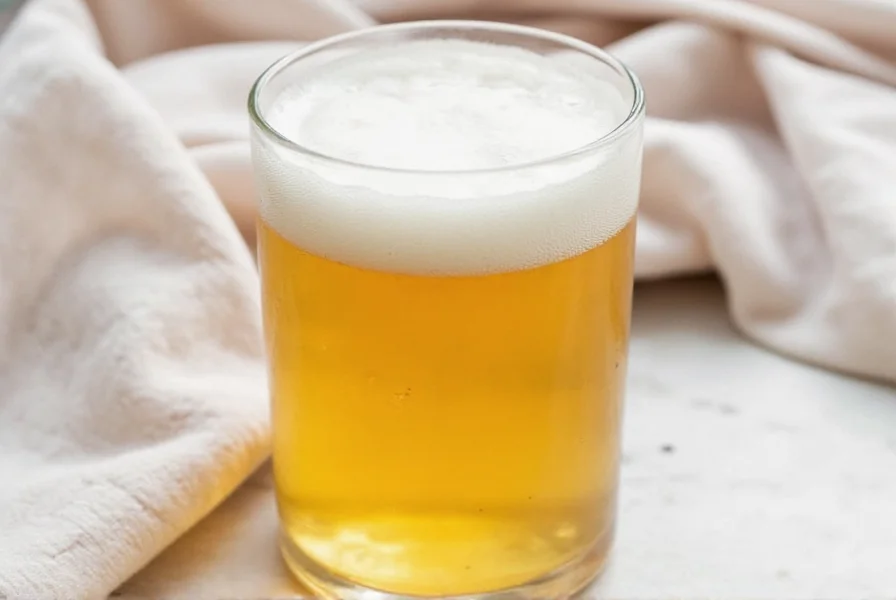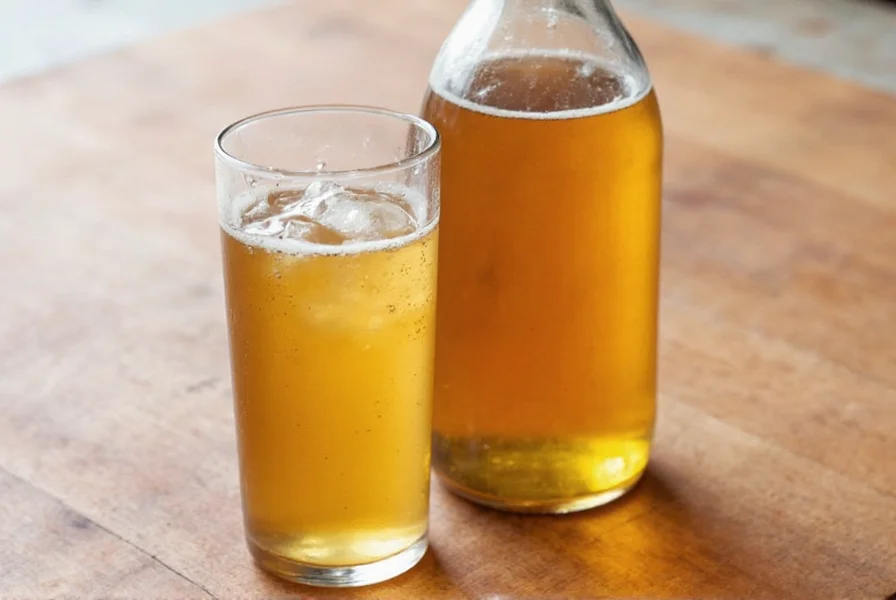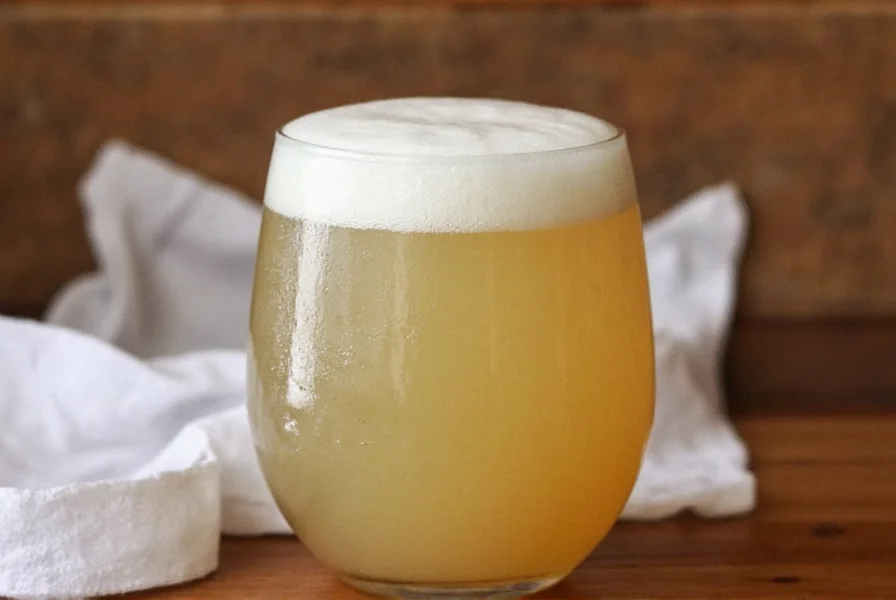The Authentic Homemade Ginger Beer Recipe You've Been Searching For
If you've ever wondered how to make genuine ginger beer from scratch, you're in the right place. This traditional recipe produces a naturally carbonated, probiotic-rich beverage with the perfect balance of spicy ginger warmth and refreshing sweetness. Unlike commercial versions that often contain artificial flavors and excessive sugar, this homemade ginger beer drink delivers complex flavor and genuine health benefits.
Why This Ginger Beer Recipe Works
Many online recipes cut corners with artificial carbonation or skip proper fermentation, but this method follows time-tested techniques that create authentic ginger beer with natural effervescence. The key is understanding the fermentation process and using quality ingredients. This recipe has been refined through years of home brewing experience, ensuring consistent results whether you're a beginner or experienced fermenter.
| Prep Time | Total Time | Yield | Difficulty |
|---|---|---|---|
| 20 minutes | 4-7 days | 1 gallon | Intermediate |
Essential Ingredients for Perfect Ginger Beer
The quality of your ingredients directly impacts your ginger beer's flavor profile. Don't substitute fresh ginger with powder—this is non-negotiable for authentic taste.
- 6 ounces (170g) fresh ginger root, peeled and finely grated
- 1½ cups (300g) organic cane sugar
- ½ cup (120ml) fresh lemon juice
- ¼ teaspoon ground ginger (for consistent spice)
- 1 gallon (3.8L) filtered water, divided
- 1 tablespoon ginger beer plant (GBP) or ¼ teaspoon champagne yeast
- 2 tablespoons raisins (optional, for natural carbonation)

Equipment You'll Need
Specialized equipment isn't necessary, but these items make the process easier:
- Large non-reactive pot (stainless steel or enamel)
- Fine mesh strainer or cheesecloth
- 1-gallon glass fermentation vessel with airlock
- Plastic or wooden stirring utensils (no metal)
- 4-6 swing-top glass bottles for bottling
- Thermometer
Step-by-Step Ginger Beer Preparation Guide
Creating the Ginger Syrup Base
- Combine 2 cups of water with grated ginger in a saucepan
- Bring to a gentle simmer (do not boil) for 20 minutes
- Add sugar and ground ginger, stirring until completely dissolved
- Remove from heat and add lemon juice
- Cool to room temperature (below 80°F/27°C)
Fermentation Process
- Strain ginger mixture into your fermentation vessel
- Add remaining water to reach 1 gallon total volume
- Stir in ginger beer plant or yeast thoroughly
- Cover with breathable cloth or attach airlock
- Ferment at room temperature (68-75°F/20-24°C) for 3-5 days
- Stir gently once daily during fermentation
Bottling for Carbonation
- Strain liquid through fine mesh into clean container
- Add raisins if using (they provide natural sugar for carbonation)
- Pour into sterilized swing-top bottles, leaving 1-2 inches headspace
- Store bottles at room temperature for 1-2 days to build carbonation
- Refrigerate to slow fermentation and enjoy within 2 weeks
Fermentation Science: What's Happening in Your Ginger Beer
Understanding the fermentation process helps you troubleshoot and perfect your homemade ginger beer recipe. The ginger beer plant (a symbiotic culture of bacteria and yeast) or added yeast consumes sugar, producing carbon dioxide (for fizz) and trace amounts of alcohol. Temperature control is critical—too cold and fermentation stalls, too warm and you risk over-carbonation or off-flavors.
During the primary fermentation stage, you'll notice bubbles forming and the mixture becoming slightly cloudy. This indicates active fermentation. The characteristic ginger beer flavor develops as volatile compounds from the ginger interact with fermentation byproducts.
Troubleshooting Common Ginger Beer Issues
| Issue | Possible Cause | Solution |
|---|---|---|
| No carbonation | Insufficient sugar, cold temperature, or dead culture | Add 1 tsp sugar per bottle and warm to 70°F for 24 hours |
| Overly alcoholic | Extended fermentation or too much sugar | Refrigerate immediately; reduce sugar in next batch |
| Vinegar taste | Acetobacter contamination | Discard batch; sterilize equipment thoroughly next time |
| Weak ginger flavor | Old ginger or insufficient quantity | Use fresher ginger; increase to 8 ounces for stronger flavor |
Perfecting Your Ginger Beer: Pro Tips
- For stronger ginger flavor: Add additional grated ginger during secondary fermentation
- To reduce sweetness: Ferment 1-2 days longer before bottling
- For complex flavor: Add citrus zest or spices like cinnamon during syrup preparation
- Safety first: Always use proper pressure-rated bottles and refrigerate after carbonation develops
- Consistency tip: Keep a small amount of your successful batch to use as starter for next time

Serving and Enjoying Your Homemade Ginger Beer
Your traditional ginger beer drink is best served well-chilled. The natural carbonation creates a lively mouthfeel that complements the spicy ginger warmth. Enjoy it straight up for digestive benefits, or use it as a mixer in cocktails. For a refreshing non-alcoholic option, try it with a squeeze of lime and fresh mint.
Properly made ginger beer contains beneficial probiotics from the fermentation process. These support gut health while delivering the anti-inflammatory benefits of fresh ginger. Unlike store-bought versions loaded with artificial ingredients, your homemade version provides genuine functional benefits along with great taste.
Storage Guidelines for Maximum Freshness
Refrigerated ginger beer maintains best quality for 2-3 weeks. The flavor will continue to develop slightly over time, becoming less sweet and more complex. Always open bottles over a sink—natural carbonation can cause vigorous fizzing. For longer storage, you can freeze ginger beer in ice cube trays then transfer to freezer bags for use in future batches or as cocktail cubes.
Frequently Asked Questions
Is homemade ginger beer alcoholic?
Traditional fermented ginger beer contains trace amounts of alcohol (typically less than 0.5%) due to the natural fermentation process. This is well below the threshold for classification as an alcoholic beverage in most countries and is generally considered non-alcoholic. The alcohol content can be minimized by refrigerating after 2-3 days of primary fermentation.
How long does homemade ginger beer last?
Properly stored in the refrigerator, homemade ginger beer maintains best quality for 2-3 weeks. The carbonation will gradually decrease over time. Always check for off odors or mold before consuming. For safety, discard if you notice any unusual colors, mold growth, or unpleasant smells.
Can I make ginger beer without fermentation?
Yes, you can create a non-fermented ginger soda by making the ginger syrup and mixing with carbonated water instead of fermenting. However, you'll miss out on the probiotic benefits and complex flavor development that occurs during natural fermentation. The fermented version has a more authentic ginger beer taste profile.
Why did my ginger beer bottles explode?
Bottle explosions occur when too much carbonation builds up, usually from over-fermentation or using improper containers. Always use pressure-rated glass bottles with secure closures, refrigerate once carbonation develops, and 'burp' bottles daily during the carbonation phase to release excess pressure. Never use twist-top bottles or plastic containers not designed for carbonation.
Can I use this recipe to make ginger beer for kids?
Yes, this traditional ginger beer recipe is safe for children when properly prepared. The trace alcohol content (less than 0.5%) is comparable to many fruit juices and kombucha. For complete alcohol elimination, refrigerate after 2 days of primary fermentation or make a non-fermented version using carbonated water instead of allowing full fermentation.











 浙公网安备
33010002000092号
浙公网安备
33010002000092号 浙B2-20120091-4
浙B2-20120091-4